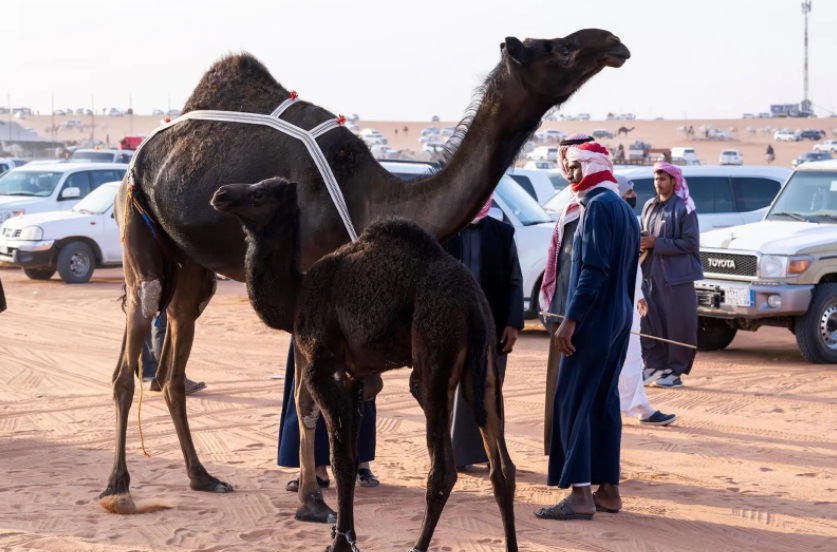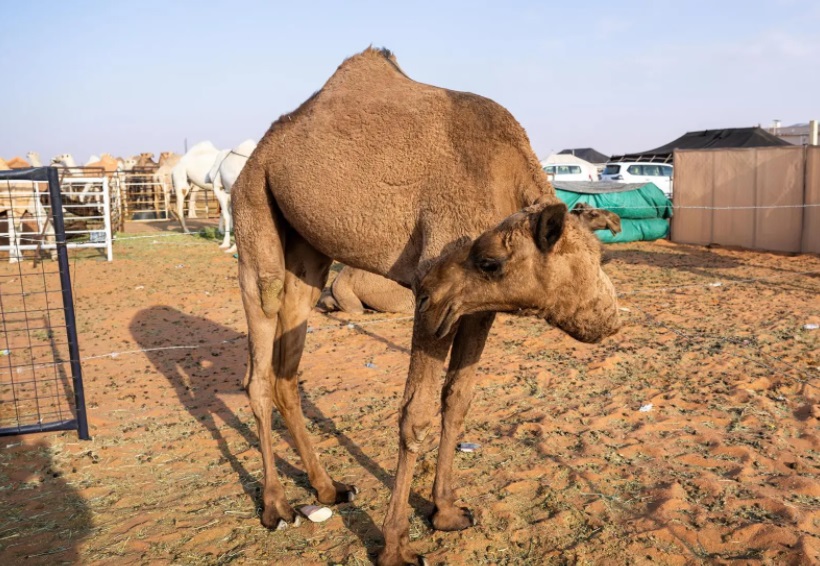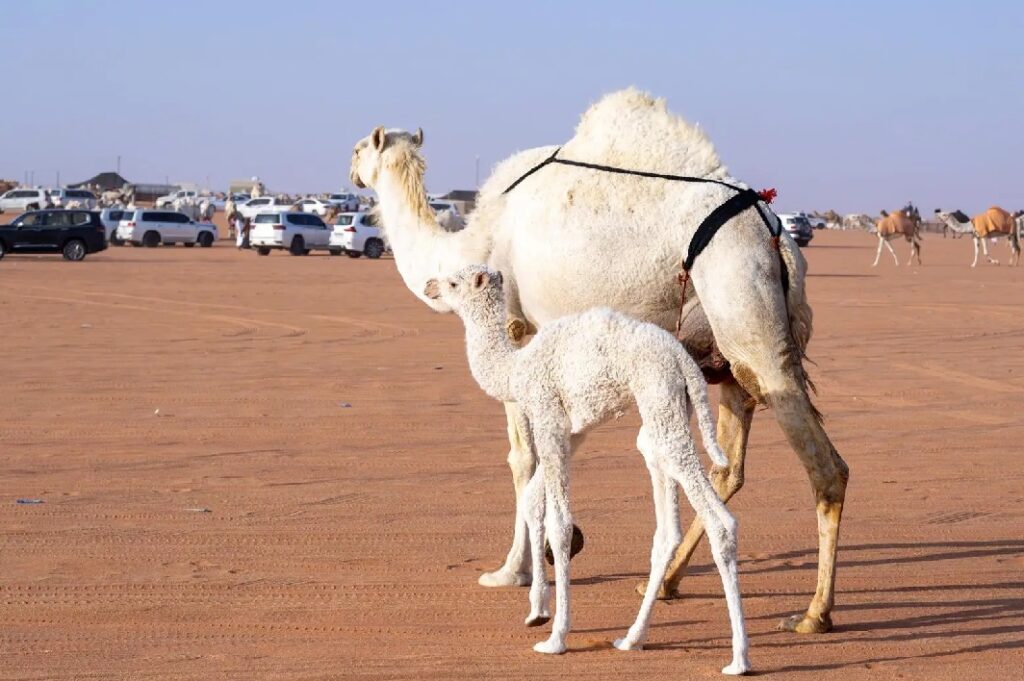In the vast expanse of the Arabian Peninsula, where golden dunes meet the horizon, a millennia-old relationship between humans and camels continues to thrive, each breed telling its own story of adaptation and survival.
Like living sculptures carved by time and tradition, six distinct breeds paint a diverse portrait of these desert dwellers. The majestic Majaheem, with its striking black coat, stands as nature’s answer to the dairy industry. In contrast, the Maghateer, draped in white, embodies Arabian elegance with its moderate build and measured productivity. The Sha’laa, wearing its red-blonde coat like a desert sunrise, races across the sands with remarkable agility, while the furry Safar sports a distinctive white-and-red blend. The medium-built Al-Hamr and the compact Awarik complete this rich tapestry of camel diversity.
But it’s in their remarkable adaptations where these creatures truly shine. Picture a camel traversing the desert: its cleft lips delicately navigating thorny vegetation, nostrils sealing shut against swirling sandstorms, and specialized salivary glands turning dry desert flora into digestible sustenance. Their legendary humps serve not as water storage, as commonly believed, but as nature’s emergency food pantry, storing fat for lean times.


These “ships of the desert” are marvels of biological engineering. Their thick, reflective coats act as natural sunscreen, while their unique foot structure prevents them from sinking into soft sand. They are living testament to nature’s ingenuity, capable of drinking massive quantities of water when available and surviving extended periods without it.
The ninth King Abdulaziz Camel Festival highlighted another fascinating aspect of this human-camel relationship: a precise naming system that tracks a camel’s entire life journey. From the dependent “Hawar” at birth to the mature “Sudsis” at seven to eight years, each name marks a significant life stage. The nomenclature extends beyond age to reproductive status and herd sizes, from the modest “Zhoud” of 3-10 camels to the impressive “Jarjour” of over 1,000.
Significance of Camel Names
Various names given to camels in the Arabian Peninsula are based on their ages and numbers. At birth, a camel is called “Hawar” because its mother is extremely attentive to it, not moving unless it is with her. This name stays until the camel is six months old. During this time, a Hawar can stand within two hours of birth and slowly begins to walk with its mother. After reaching six months up to a year, it is called “Makhlool,” and then “Mufroud” from one to two years old, when it becomes completely independent in grazing and drinking.


From two to three years, it is known as “Luqai,” meaning it has met its sibling from its mother’s subsequent birth. Upon reaching three to four years, it is referred to as “Haq,” when it starts to carry loads. It is called “Jathaa” during its fourth and fifth years. When it is between five and six years old, it is named “Thinee,” and it replaces its first set of incisors.
“Rabaa” refers to camels between six and seven years old, and “Sudsis” for those seven to eight years old. A camel typically lives between 25 to 30 years. Camels are also named based on their reproductive status. “Hail” is one that has not been mated, “Haqah” is pregnant, “Khilfah” has a calf, and “Ma’ashar” denotes the initial period after insemination.
Arabs also have specific names based on the number of camels. “Zhoud” includes 3 to 10 camels, “Sarmah” consists of 20 to 30 camels, “Hijmah” ranges from 50 to 90 camels, “Hanidah” consists of 100 camels, “Arj” means 500 to 1,000 camels, and more than 1,000 camels are called “Jarjour.”
These desert companions remain deeply woven into the fabric of Arabian culture. They represent not just livestock, but living heritage – a bridge between the ancient ways of the desert and the modern world. As they continue to adapt and thrive, camels remind us that in the harsh beauty of the Arabian desert, tradition and survival go hand in hand.


Today, as climate change threatens many species, these remarkable animals stand as symbols of resilience, their ancient adaptations perhaps holding lessons for our uncertain future. In their steady gaze and measured stride, we glimpse not just the past, but a possible blueprint for survival in our warming world.


